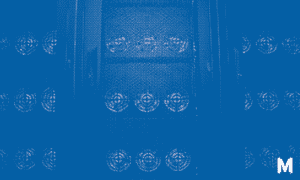MasterCard and Binance are teaming up to launch a bitcoin and crypto prepaid card in Argentina.
The card allows holders in Argentina to top up the prepaid card bitcoin and spend bitcoin at “over 90 million Mastercard merchants worldwide, both in-store and online”, according to a press release published on the MasterCard website.
Card holders can manage the card in a card dashboard accessible through the Binance App. The ‘Binance Card’ is currently in beta, requires a valid ID and will become widely available in Argentina in the coming weeks.
According to the press release, the goal of the new prepaid card is to “bridge the gap between cryptocurrencies and everyday purchases”. Argentina currently has a year-over-year inflation rate of 60%. With the Argentine Peso losing value so rapidly, bitcoin could help locals protect their purchasing power.
Holders of the new Binance Card can pay at available MasterCard merchants with bitcoin. The spent bitcoin is converted into fiat currency on the spot. The merchants receive fiat.
This way customers can pay in bitcoin but merchants don’t need to hold any bitcoin or deal with price fluctuations. Instead, they can hold a non-volatile fiat currency that loses 60% of its value per year. Joking aside, this is similar to the model that is currently rolled out in “Bitcoin Valley” in Honduras.
Many merchants still don’t understand bitcoin or prefer not to hold it due to technical hurdles, accounting difficulties, lack of regulatory clarity, volatility or other perceived risks.
It seems as if bitcoin’s adoption as a medium of exchange is happening in two phases.
Phase one is when consumers can protect their purchasing power by holding bitcoin and are able to pay for any goods and services in bitcoin. Whether the merchant converts the bitcoin back into fiat currency is none of their business as long as they can hold and pay in bitcoin.
Initially, many merchants are likely to instantly convert their bitcoin or crypto into fiat, and even prefer it, which is why most of the current mass “bitcoin payment” solutions automatically convert bitcoin into fiat.
In phase two, at a later point, we could see merchants preferring to receive payments in bitcoin and not convert it back to fiat, or at least not all of it.
Maybe merchants will one day prefer to keep a percentage of bitcoin on their balance sheet while holding the rest in fiat currency, stablecoins or something like the Stablesats feature recently rolled out by Galoy Inc. to cover operating expenses.
The prepaid card could help bitcoin transition from a store of value to a medium of exchange, at least in Argentina.




